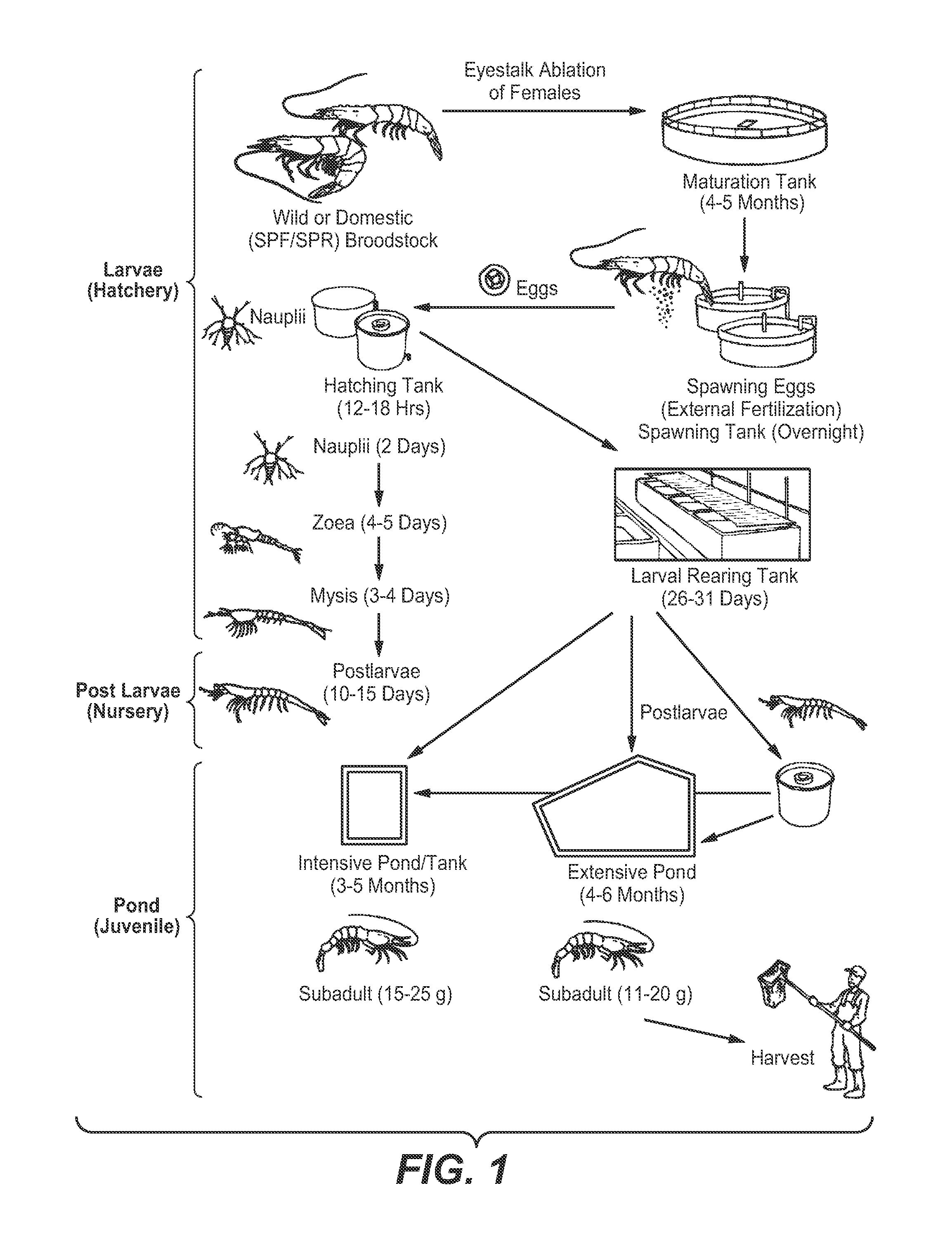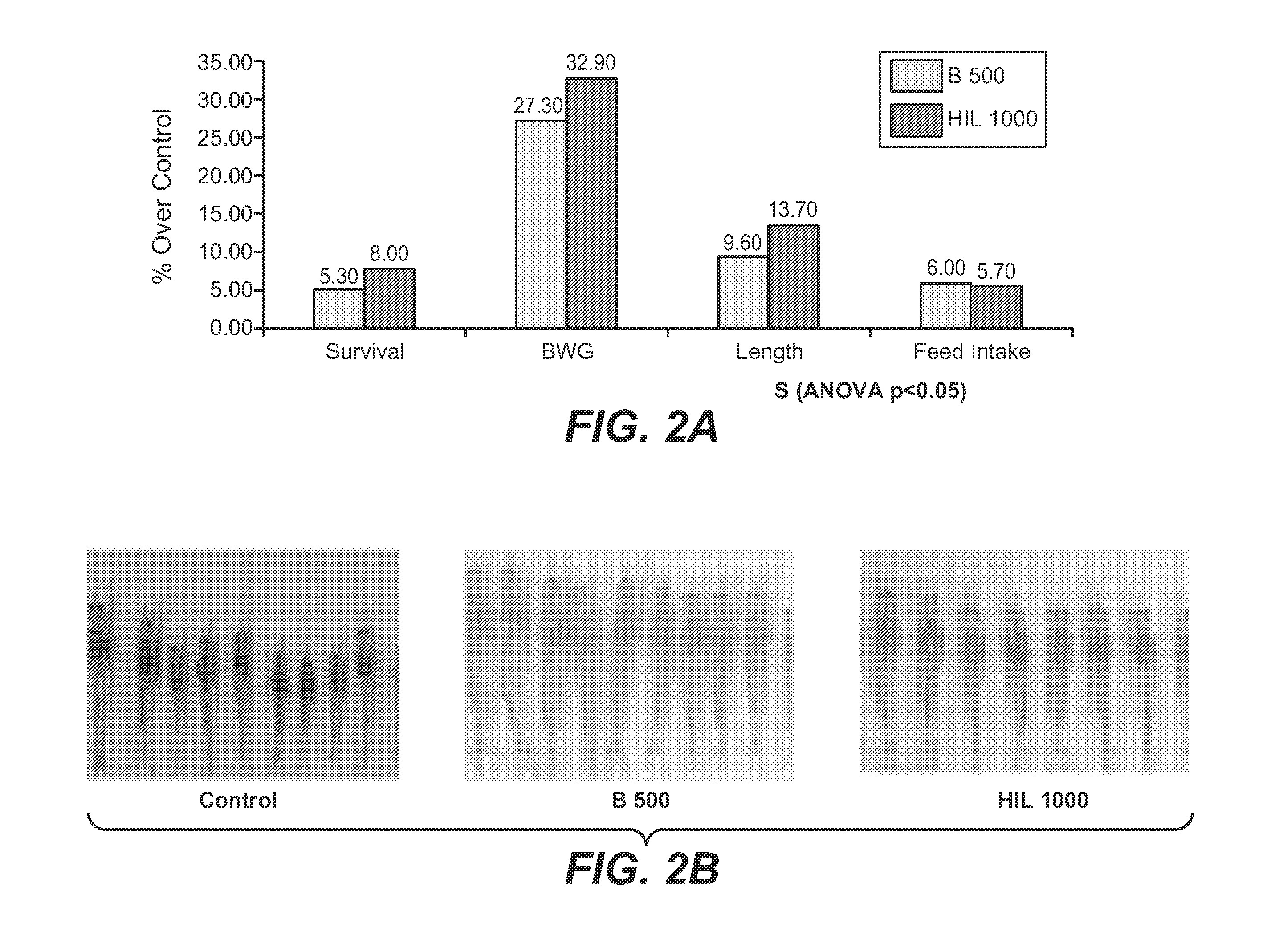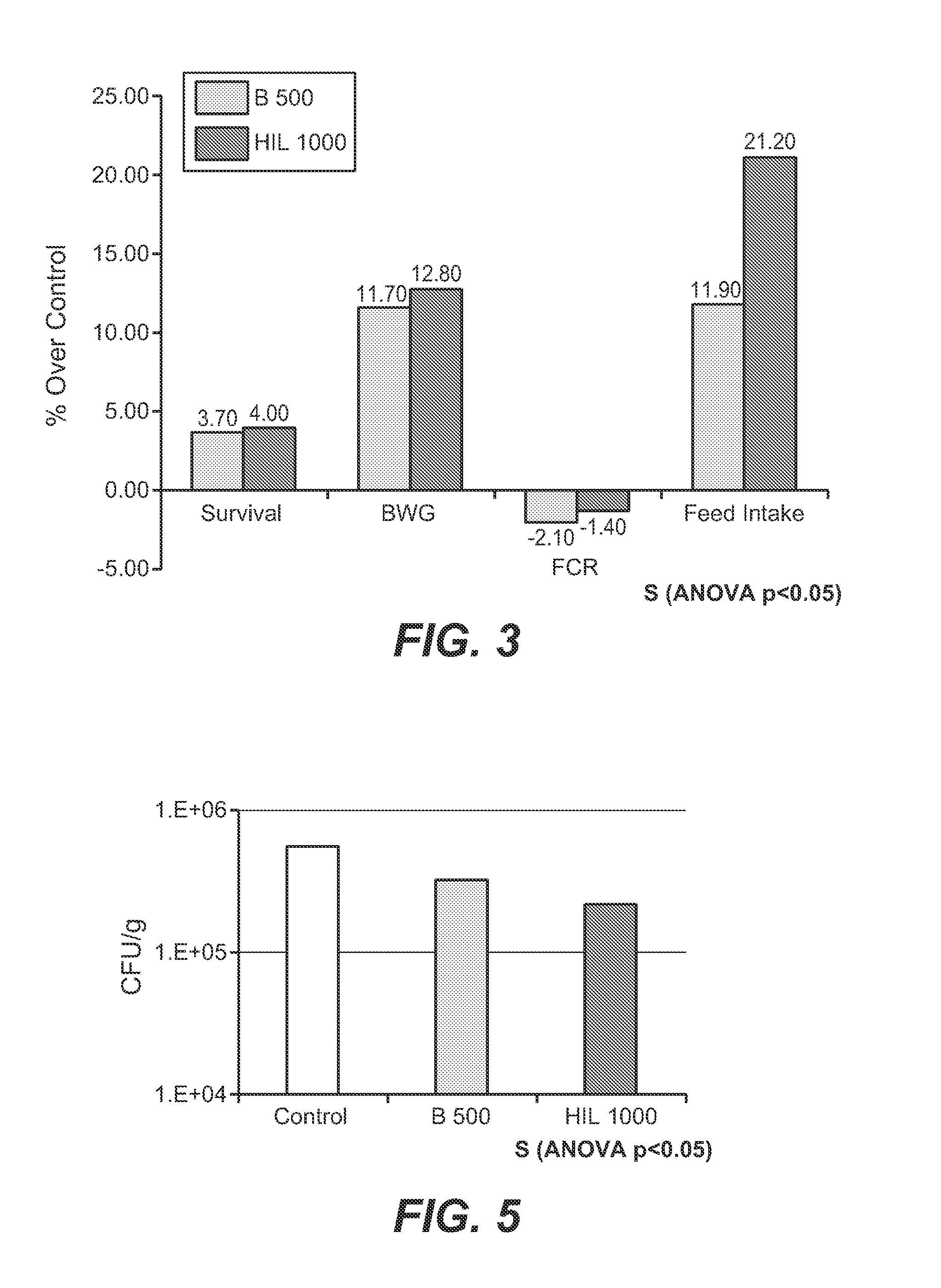Microbial Strains and Their Use in Animals
a technology of microorganisms and strains, applied in the field of aquaculture, can solve the problems of reducing productivity and billions of dollars in economic loss, and achieve the effects of increasing feed intake, increasing survival, and increasing body weight gain
- Summary
- Abstract
- Description
- Claims
- Application Information
AI Technical Summary
Benefits of technology
Problems solved by technology
Method used
Image
Examples
example 1
Effect of Bacillus and Heat-Inactivated Lactobacillus on Growth Performance in White Shrimp (Penaeus vannamei) Post Larvae
[0076]In this study, initial weight, final weight, weekly weight gain, feed intake, feed conversion ratio (FCR), length, survival, muscle gut ratio, color of hepatopancreas, deformities, and degree of fouling were measured. White shrimp Litopenaeus vannamei in their post larval stage were used. Five replicates were conducted for each of the treatments shown in Table 1 below (Bac=Bacillus; HIL=Heat Inactivated Lactobacillus.) Approximately 300 shrimp per square meter were maintained in a 200 liter glass aquarium. The water was maintained at 29 degrees Celsius with salinity of 25 ppt. Approximately 20 percent of the water was exchanged per day.
TABLE 1NoTreatmentDose tested (g / ton)1Control group—2Bac 500500 (108 CFU / g of feed)3HIL 500 5004HIL 100010005HIL 500 + Bac 500500 g / ton HIL + 500 g / ton Bac
[0077]Bacillus feed compositions comprised dried Bacillus fermentatio...
example 2
Effect of Bacillus and Heat-Inactivated Lactobacillus on Stress Resistance in White Shrimp (Penaeus vannamei) Post Larvae
[0082]In this study, the stress response of post larvae shrimp to high salinity, low salinity, high temperature, and low temperature were evaluated. In addition, the stress response of the shrimp to formalin was evaluated. Survival, HSP70 heat shock protein, glutathione peroxidase (GPx), and N / K ATPase were measured. HSP70 is a 70 kDa heat shock protein that is a conserved molecular chaperone, found in the cytosol and in other compartments of the cell, that promotes the survival of stressed cells. They play an essential role in the life cycle of many proteins under both normal and stressful conditions. Glutathione peroxidase (GPx) is the general name of an enzyme family with peroxidase activity whose main biological role is to protect the organism from oxidative damage. The biochemical function of glutathione peroxidase is to reduce lipid hydroperoxides to their ...
example 3
Effect of Bacillus and Heat-Inactivated Lactobacillus on Growth Performance in Juvenile White Shrimp (Penaeus vannamei)
[0087]In this study, weight gain, length, feed conversion ratio (FCR), digestive enzymes (pectinase, amylase) in hepatopancreas and intestine, and gut histology were measured. Juvenile white shrimp Litopenaeus vannamei were tested. Five replicates were conducted for each of the treatments shown in Table 5 below (Bac=Bacillus; HIL=Heat Inactivated Lactobacillus.) In one study, approximately 25 shrimp per aquarium were tested per replicate. The water was maintained at 29 degrees Celsius with salinity of 25 ppt. In another study, approximately 300 shrimp were kept per net per replicate test. Shrimp were acclimatized in the net cages for seven days prior to the start of the experiment. The net cages were installed in a shrimp pond and covered with a net sheet to prevent the shrimp from escaping. Two sets of paddle wheels were equipped in the shrimp pond to increase the ...
PUM
 Login to View More
Login to View More Abstract
Description
Claims
Application Information
 Login to View More
Login to View More - R&D
- Intellectual Property
- Life Sciences
- Materials
- Tech Scout
- Unparalleled Data Quality
- Higher Quality Content
- 60% Fewer Hallucinations
Browse by: Latest US Patents, China's latest patents, Technical Efficacy Thesaurus, Application Domain, Technology Topic, Popular Technical Reports.
© 2025 PatSnap. All rights reserved.Legal|Privacy policy|Modern Slavery Act Transparency Statement|Sitemap|About US| Contact US: help@patsnap.com



